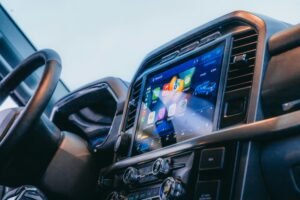
From Black Ice to Blizzards: How to Handle Any Winter Driving Challenge
Drivers need the essential skills and knowledge to navigate safely during winter. Winter driving may
Drivers need the essential skills and knowledge to navigate safely during winter. Winter driving may be problematic and sometimes dangerous because roads are icy, visibility is biased, and weather prerequisites are unpredictable.” Good Driver” offers perspicuity into driver training in Brampton and the process for taking the driver’s test in the city.
This post will consult various winter driving challenges and leads for conducting them effectively
Black ice poses an unprecedented danger to all those behind the wheel, bringing rain or even snow, which, in contact with the asphalt and low temperature, forms a dangerous layer of ice, generally referred to as black ice. This type of clear ice has almost no driving visibility, and it can cause vehicles to lose traction and lead them into accidents or dangerous road conditions. To reduce time in the event of increasingly difficult prospects, the twofold job facing drivers is indispensable: practical driving, slowing down and keeping a reasonable distance between vehicles.
Here are some strategies for exploiting black ice: For example, decelerating on ice must be done carefully and progressively to prevent gliding or losing control.
In a whiteout condition, such as during a snowstorm or blizzard, for example, visibility is reduced, and the driver will not even be able to identify what is near. Which in turn may cause severe and deadly accidents, giant impacts, or even deaths. Snow can also create icy patches on the road, making it much more challenging to maintain a vehicle. Winter storms can make driving very hazardous, so drivers need to be extra cautious. While each province and territory in Canada may have its own specific rules, the overall licensing process is quite similar across the country.
Here are some tips to handle blizzards and heavy snow:
Driving in winter presents distinctive challenges, such as decreased visibility from fog, rain, or snowfall. Understanding road requirements and adapting your speed to suit them is paramount. Luminous headlights can further lessen visibility in these weather necessities, so sidestepping utilizing high beams is best. Expecting their conditioning can be difficult in unpredictable winter weather.
Here are some tips to handle lessened visibility:
When the road is icy, it’s important to keep sufficient space from the car in front to maneuver safely. Also, their study shows that if it requires 23 meters to halt on a sunny day, one will need at least 230 meters to do the same on ice. Selecting your car’s traction and increasing the possibility of a skid can provide significant complications, particularly when an icy path only highlights how arduous it is for you. Hence, it is advised to decrease your speed and leave a good safety margin to avoid sudden maneuvers and to be alert to the weather conditions when passing through these unsupported roads.
Here are some essential guidelines for driving safely on icy roads:
These simple guidelines will significantly reduce the hazard of accidents in icy conditions.
Navigating snowy roads can be dangerous, and cruise control can worsen the situation. It can cause the car to skid on icy roads and lead to a loss of control.
Dealing with Blizzards: Blizzards are among drivers’ most dangerous weather conditions. Drivers must be extra cautious during a blizzard and should avoid travel if possible.
Remember, “Good drivers” driver lessons Brampton are always prepared and aware of their surroundings. Take the fundamental protection and apply safe winter driving techniques. You will feel more in control of the winter period and reduce the probability of an incident on the road.

Drivers need the essential skills and knowledge to navigate safely during winter. Winter driving may

Are you ready to take your first steps towards getting your full driver’s license in

Introduction Obtaining a driver’s license in Canada is a significant milestone for many individuals. The

Canada offers a wide range of driving schools that cater to learners of all ages

Canada operates a decentralized driving licensing system, with each province and territory responsible for issuing

The G road test is a significant milestone for any aspiring driver in Ontario. It